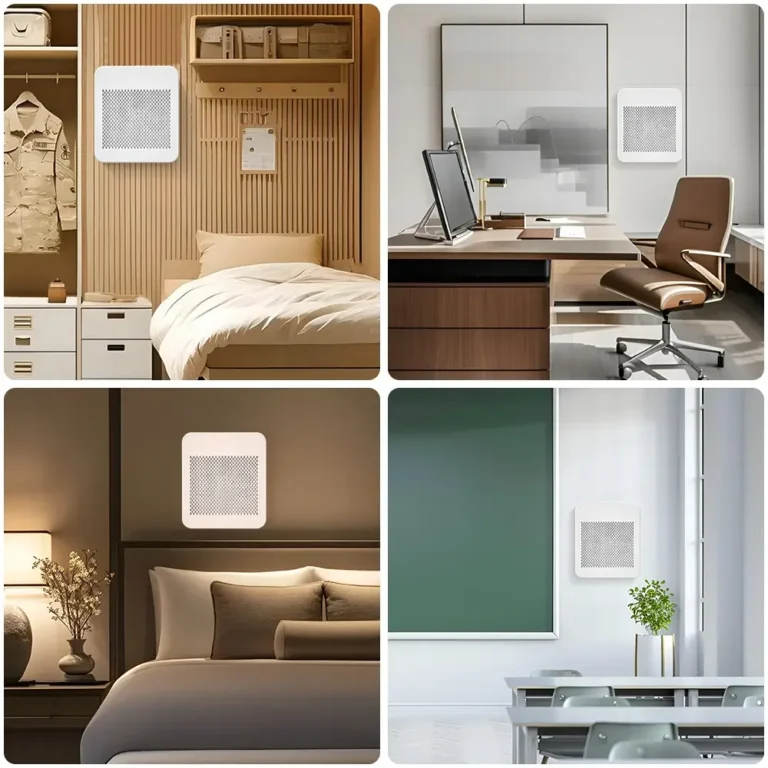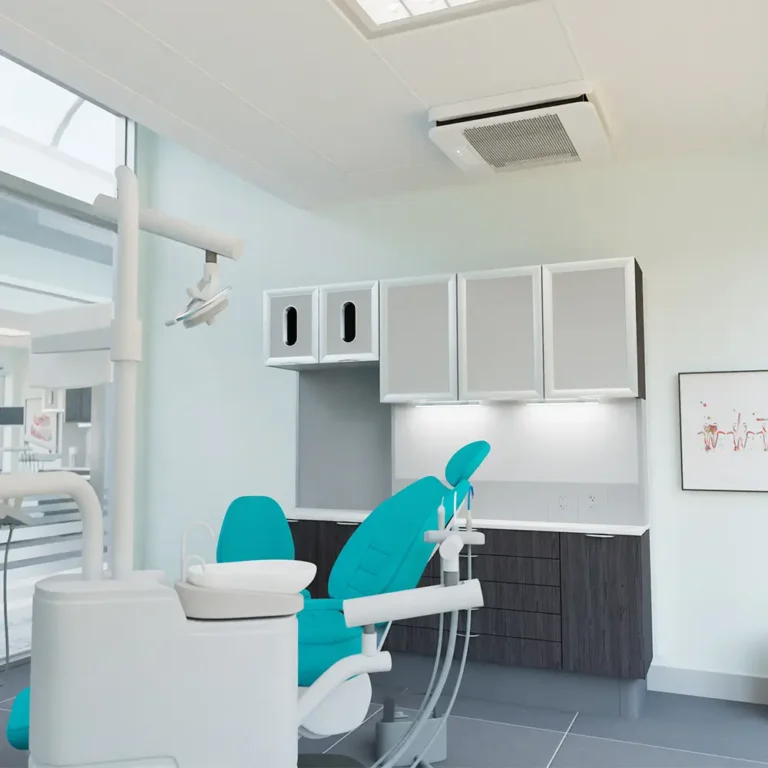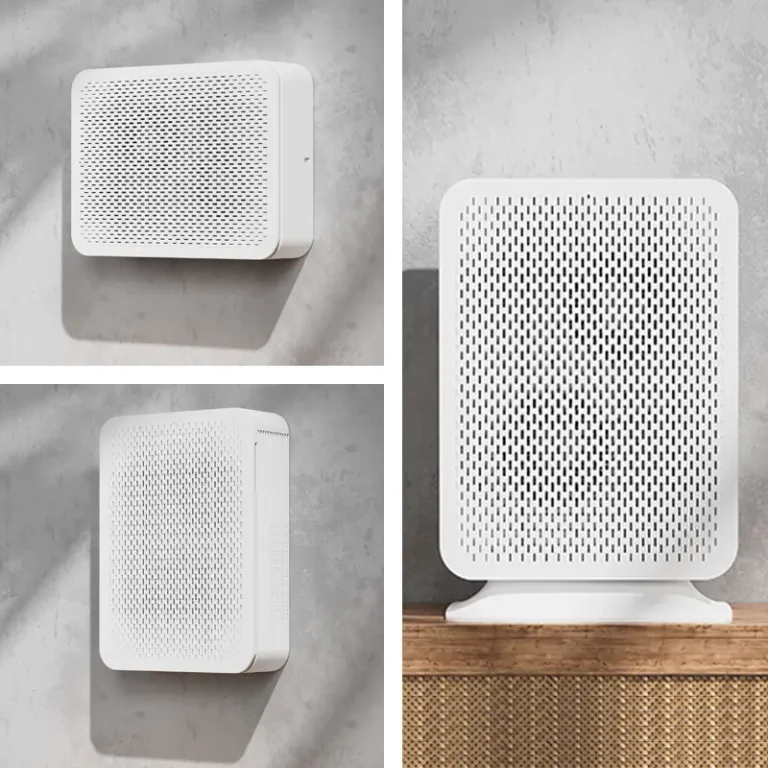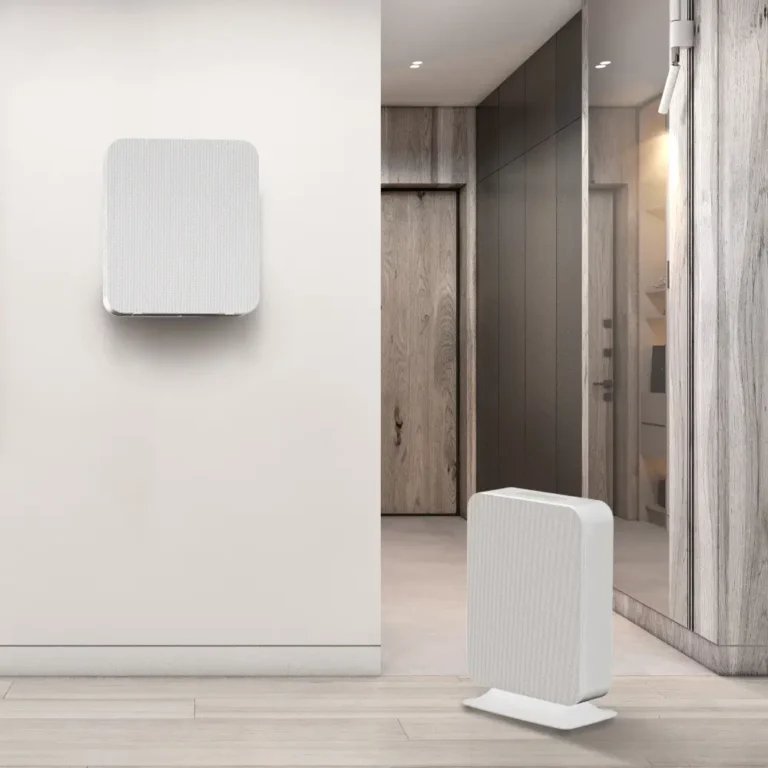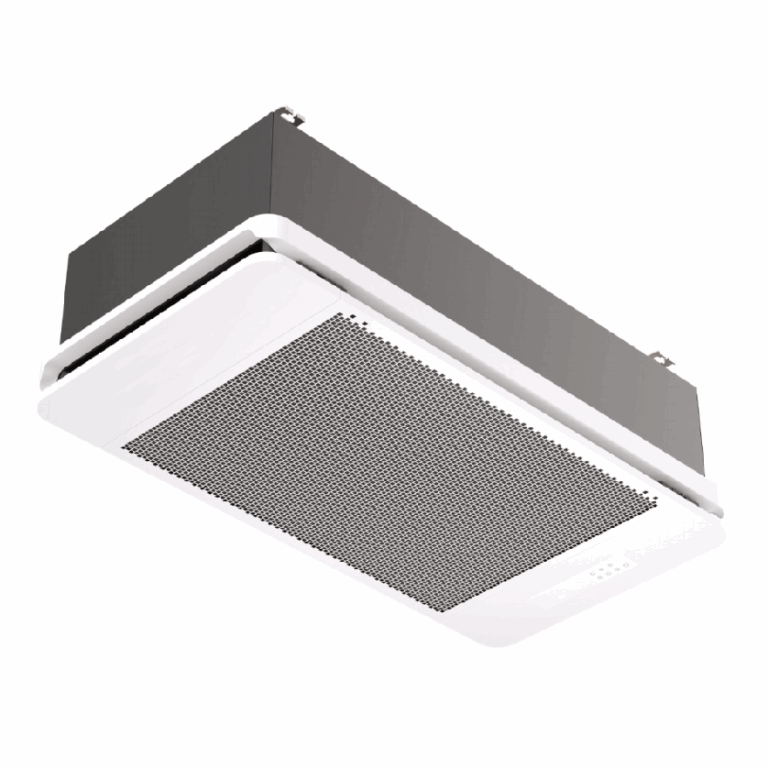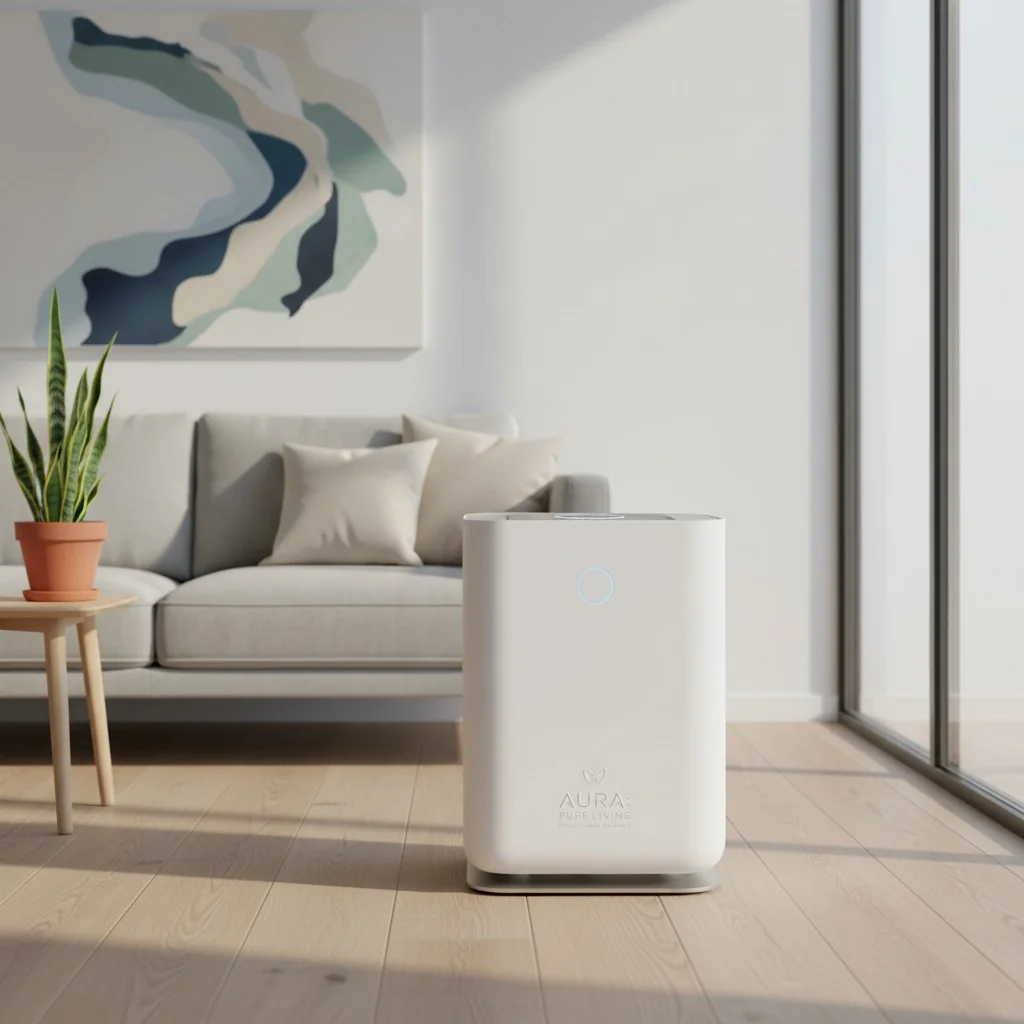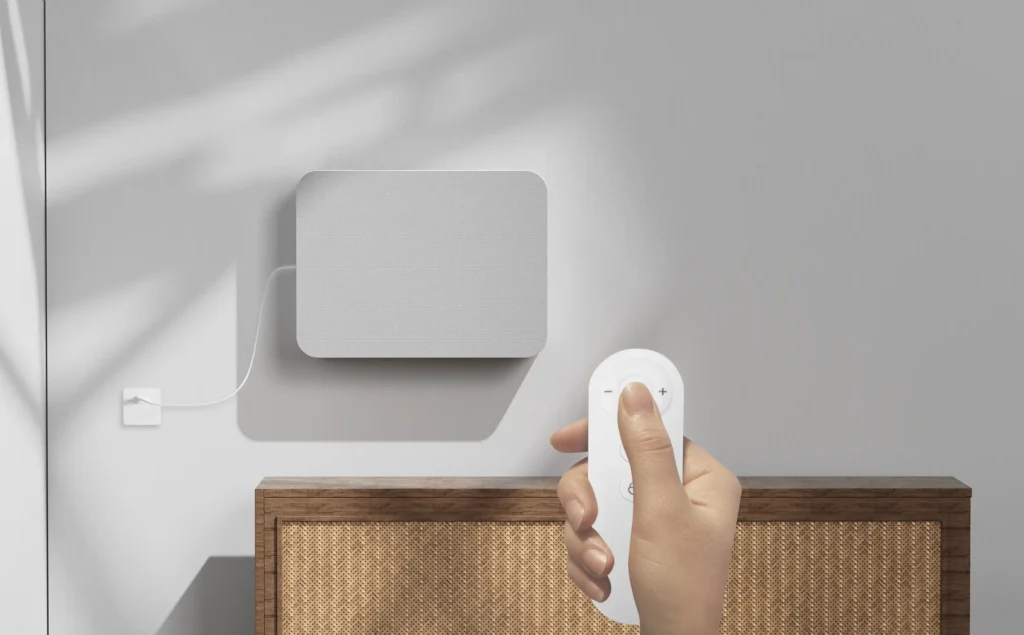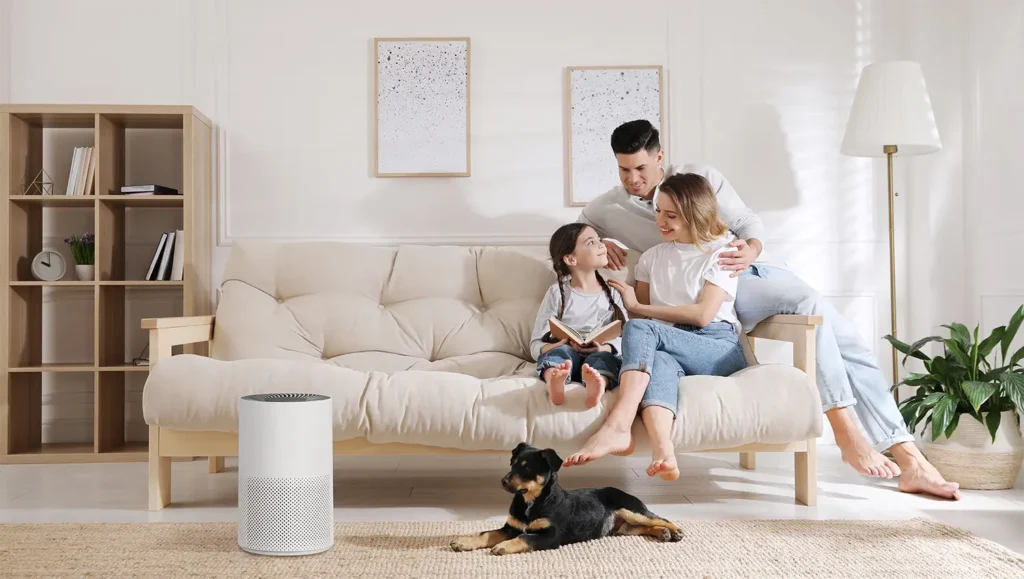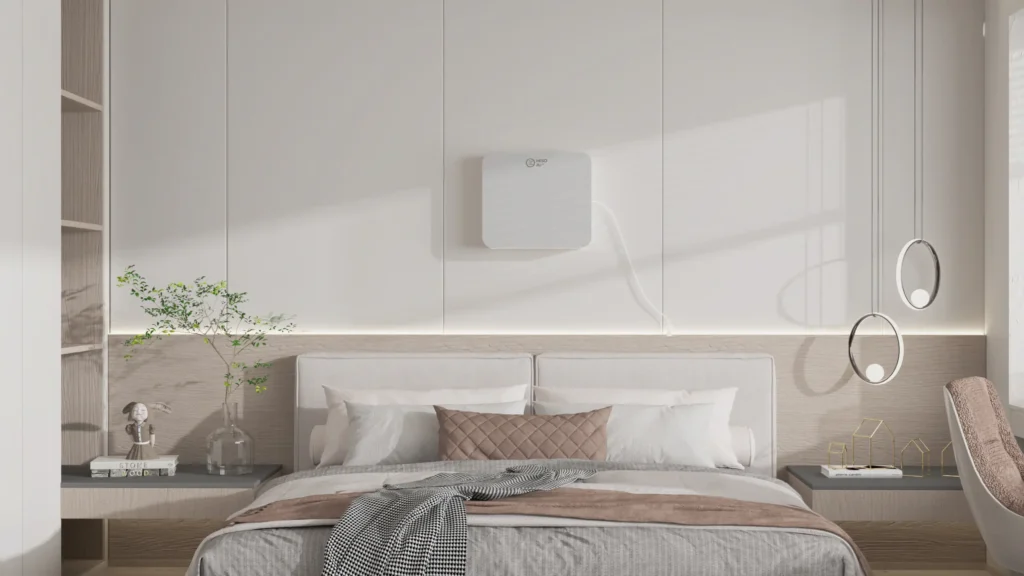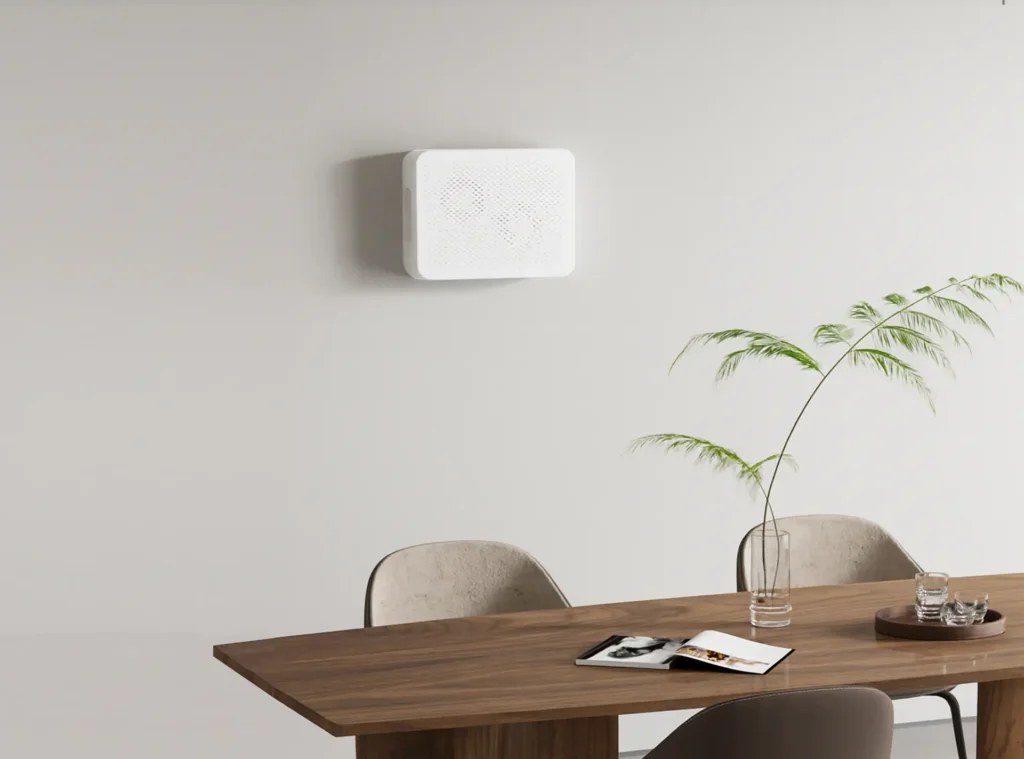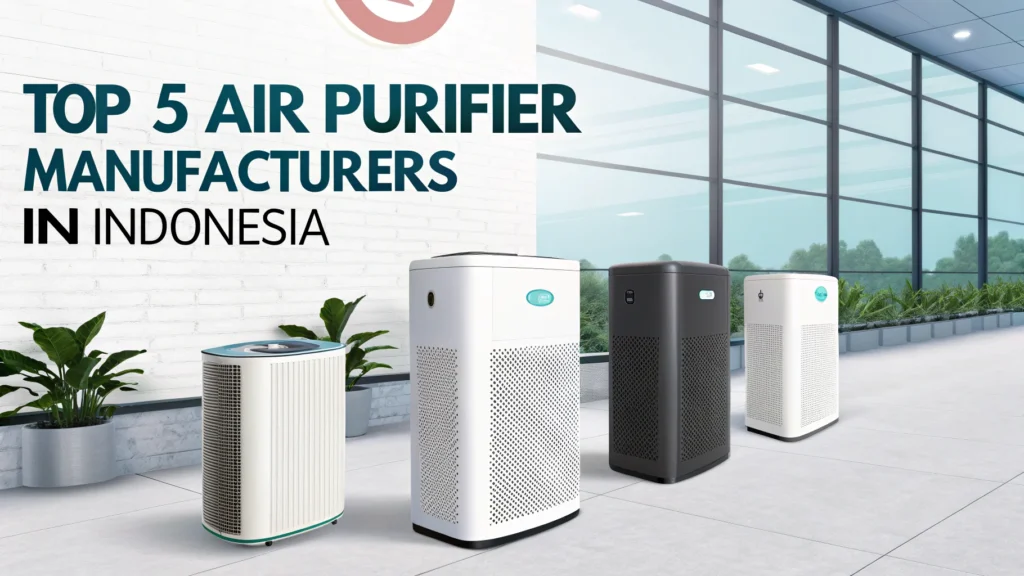Indoor air quality isn’t a nice-to-have—it’s daily infrastructure. Wildfire smoke, urban PM2.5, and indoor sources from cooking to cleaners now make clean air a baseline requirement for health, comfort, and focus. But when it comes to actually improving IAQ, most homes and buildings face a practical choice: install wall-mounted HEPA purifiers for room-by-room cleaning, or rely on the Sistema HVAC with upgraded MERV-13+ filtration for whole-home coverage. And here’s the twist: neither tackles CO₂ or humidity without mechanical ventilation (ERV/HRV).
This guide cuts through the noise. We’ll compare how wall-mounted purifiers and HVAC filtration work, what each removes (and doesn’t), real-world performance metrics like CADR and ACH, energy and upkeep costs, and where ERV/HRV fits in. By the end, you’ll know when to choose one, when to combine them, and exactly how to size a solution that delivers cleaner, quieter, smarter air.
How Each System Works
Purificador de aire de pared
Wall-mounted air purifiers, like those from HisoAir, are designed for room-specific air cleaning. They use a multi-stage filtration process, typically featuring a True HEPA (H13/H14) filter to capture microscopic particles (PM2.5, pollen, dust) and an filtro de carbón activado to absorb odors and VOCs. HisoAir’s models, for example, offer a Clean Air Delivery Rate (CADR) of 380 m³/h, suitable for rooms up to 50m² 1.

HVAC Filtration
HVAC systems provide whole-home air filtration. The effectiveness is determined by the MERV (Minimum Efficiency Reporting Value) rating of the filter. Upgrading to a MERV-13 or higher filter significantly improves particle removal. However, the system's blower must run consistently for effective filtration, and it may not be as efficient as a HEPA filter for the smallest particles.
Ventilation Add-ons (ERV/HRV)
Energy Recovery Ventilators (ERVs) and Heat Recovery Ventilators (HRVs) are essential for managing CO₂ buildup and humidity. They introduce fresh outdoor air while recovering energy from the exhaust air. HisoAir offers several ERV models that can recover up to 85% of thermal energy, providing fresh, pre-conditioned air.
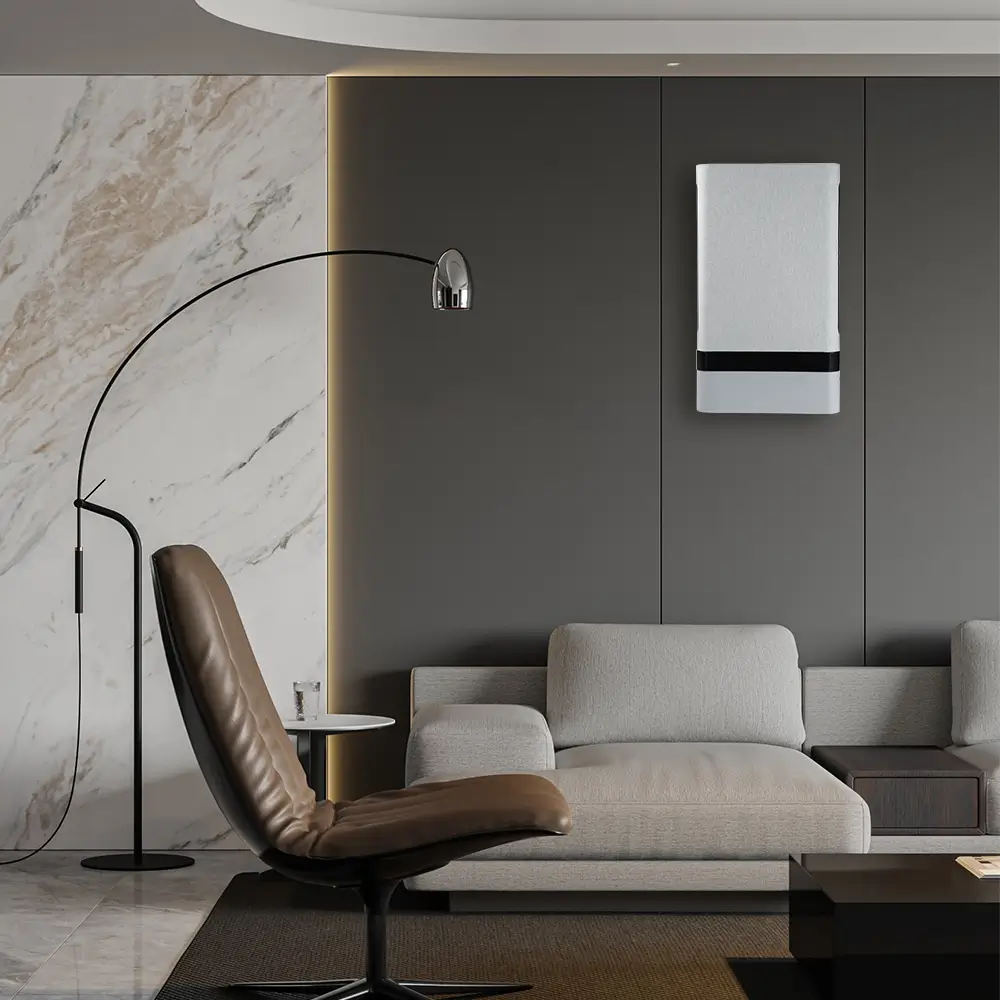
What They Remove
- Particles (PM2.5, Pollen, Dust): HEPA purifiers are superior for capturing fine particles in a single room. HVAC systems with MERV-13+ filters provide good whole-home particle reduction.
- VOCs/Odors: Activated carbon filters in both purifiers and HVAC systems can adsorb these, but their capacity is limited and they require regular replacement.
- CO₂ & Humidity: Neither HEPA nor MERV filters remove CO₂. This requires ventilation from an ERV or HRV.
Key Performance Metrics
For Air Purifiers
- CADR (Clean Air Delivery Rate): Indicates how quickly a purifier cleans a room. Higher is better.
- ACH (Air Changes Per Hour): How many times the air in a room is filtered per hour. Aim for 5 or more for sensitive individuals.
- Noise (dB): Lower is better, especially for bedrooms. HisoAir purifiers operate as low as 25 dB(A) 1.

For HVAC Systems
- MERV Rating: Higher ratings mean better filtration.
- Pressure Drop: A measure of airflow resistance. A filter with too high a pressure drop can strain the HVAC system.
Coverage and Cost
Purificador de aire de pared
- Coverage: Room-specific. Ideal for bedrooms and offices.
- Cost: Initial purchase price plus ongoing filter replacement costs. HisoAir's filters are rated for 12 months 2.
HVAC System
- Coverage: Whole-home, but can be less effective in rooms with closed doors.
- Cost: Filter costs are generally lower than HEPA filters, but may need more frequent replacement. Running the fan continuously increases energy costs.
Installation and Maintenance
- Wall-Mounted Purifiers: Simple to install and maintain. Filter changes are straightforward.
- HVAC Systems: Upgrading to higher MERV filters may require professional installation. Regular filter changes and system maintenance are crucial.
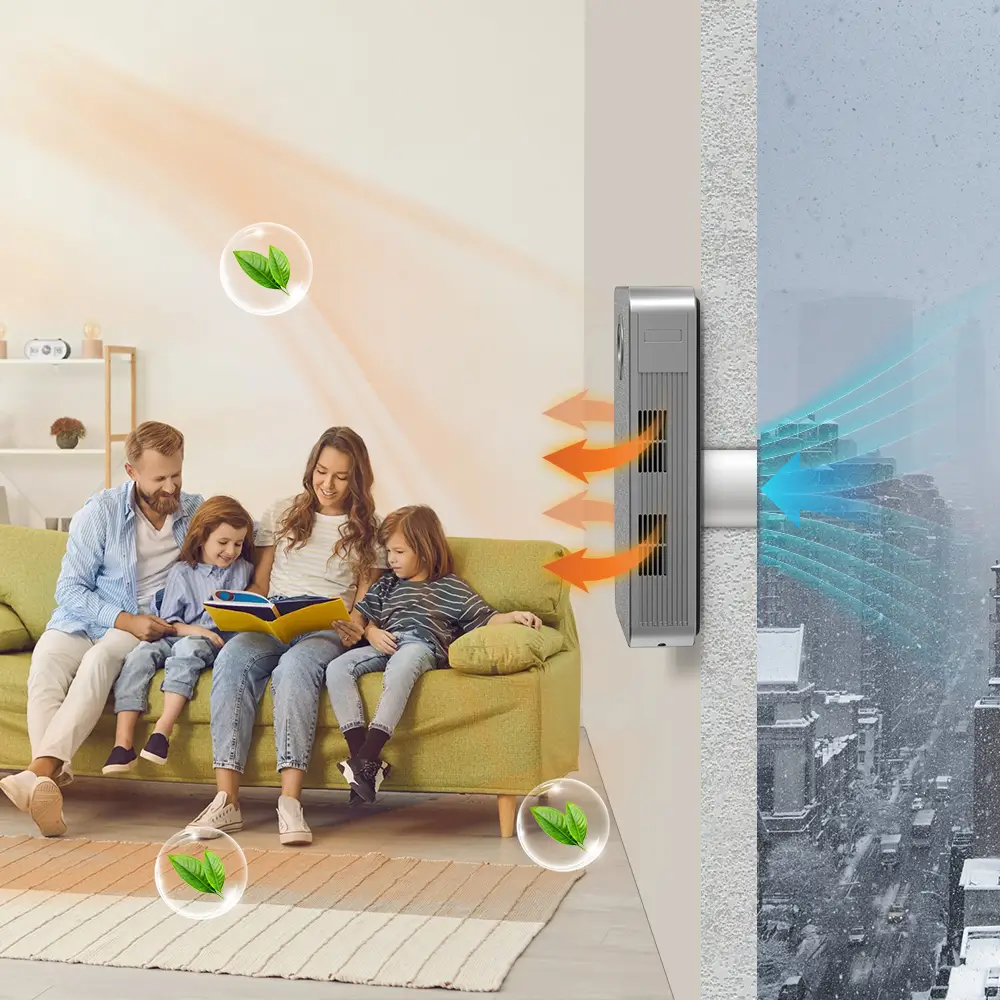
Recommendations for Common Scenarios
- Wildfire Smoke: Use HEPA purifiers in bedrooms and a MERV-13 filter in your HVAC system.
- Allergies: HEPA purifiers in sleeping areas are highly effective.
- High-CO₂: Install an ERV or HRV for ventilation.
Sizing Your Air Purifier
Use the formula: ACH = (CADR × 60) / Room Volume. For a 12x15x9 ft room (1,620 ft³), a purifier with a CADR of at least 162 CFM is needed for 6 ACH. HisoAir's 223 CFM purifiers are a good fit for this size room 1.
Summary: The Best of Both Worlds
For the best indoor air quality, a combination of solutions is most effective. Start with a MERV-13 filter in your HVAC for a whole-home baseline. Add wall-mounted HEPA purifiers in bedrooms and other critical areas for targeted particle removal. Finally, for fresh air and to control CO₂ and VOCs, integrate an ERV or HRV system. This layered approach provides a comprehensive solution for a healthy indoor environment.
References
-
HisoAir. Wall-Mounted Air Purifiers. Available at: https://hisoair.com/wall-mounted-air-purifiers/ ↩ ↩ ↩
-
HisoAir. Wall-Mounted Air Purifiers with 12-month Lifespan Filter HA200 & HA400. Available at: https://hisoair.com/product/standing-wall-mounted-air-purifier-ha200-ha400/ ↩

